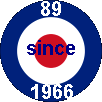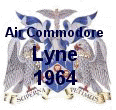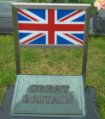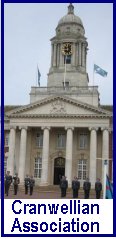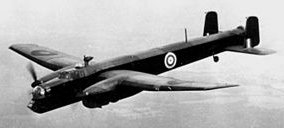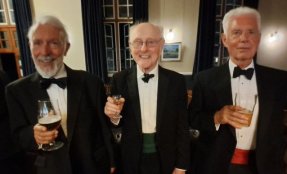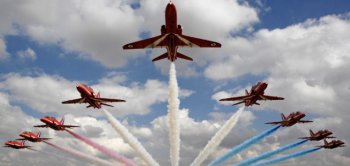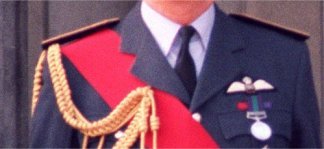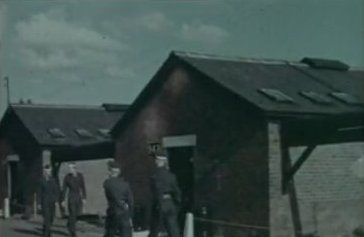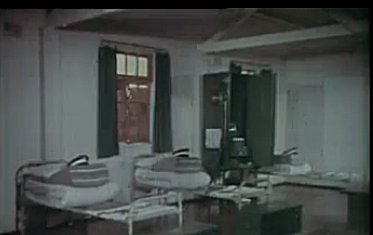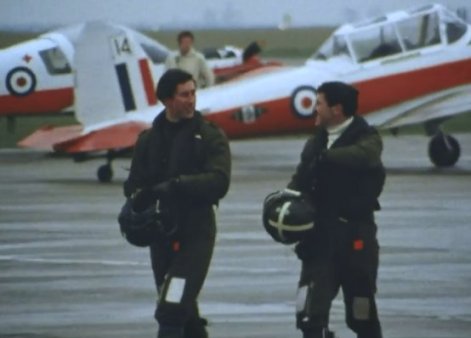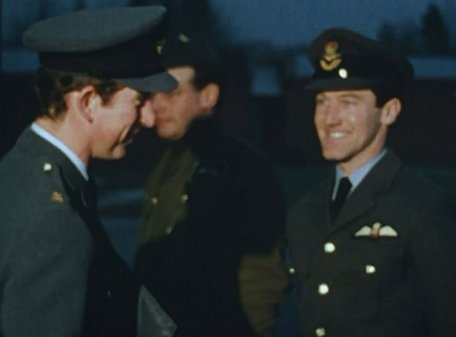|
Email your photos & stories |
|
For the Korean War site by Simon Coy
|
Cranwell
LINKS

BUMF? - its definition and origin
| The word
"bumf" was introduced into the English language in late 1939 early 1940 courtesy of the Whitley
bomber aircrews in North Yorkshire. Before the Linton-on-Ouse RAF museum
disappeared along with the base, it had evidence that the word
"bumf" expanded into in general use courtesy of 10 and 78 Squadrons in
late 1939 early 1940. These two squadrons along with 51, 58 and 102 Yorkshire
based Whitley squadrons were originally tasked to fly over Germany, as far as
Berlin, and drop propaganda leaflets! The Chamberlain government didn't want to bomb
Germany, in case we
upset them and they bombed us! Being RAF, the aircrews were naturally skeptical
and since toilet paper was in short supply in those days they initially referred
to the leaflets as "Bum Fodder". This was soon shortened to
"Bumf" and quickly expanded to describe any useless
paperwork!
We have now expanded it to incorporate anything published on the Internet - including our bumf, since real news is a bit thin and generally unpleasent! |
Armstrong Whitworth Whitley |
Sad losses in 2025
It is with great sadness that we have to report the loss of two of our members in 2025...
Tony Ware of 'A' Squadron and Dick Slogrove of 'B' Squadron. Both were stalwart supporters of 89 Entry functions and reunions and both will be sadly missed by both us and their families.
Latest Re-unions
|
'A' Squadron The last squadron re-union was held in November by "A" Squadron at their regular haunt, the Wroxton House Hotel, Banbury. Malcolm Gaygill, a 'D' Squadron survivor, was their guest of honour. It is reported, by several of those present (the ones who still standing at the end), that Malc boosted the occasion with a very rare and powerful whisky. He had apparently bottled this himself from a special cask that he and a mate had acquired several years earlier. It proved so good that the survivors reckoned that he was distilling it himself in some dark corner of Lancashire! Is that Malc Caygill up to some old tricks learnt whilst strapped to his bed in RAF Hospital Nocton Hall? |
 |
Cranwellian Association Annual Reunion 2025
This year we were somewhat thin on the ground at Cranwell with only Jock Reid, Chris Saunby and Les Quigley of 89 Entry joining a much reduced turnout of just 44 former Flight Cadets from 70 to 102 Entries being represented. However, the numbers attending were increased with the addition of post cadet era trainee officers and current university squadron members. Both these representatives added interest and an insight into today's RAF officer corps and demonstrated that the underlying spirit and dedication of the RAF is much the same as when 89 Entry were cadets.
The event itself was exceptionally well organised..... The food - lunch, afternoon tea, dinner and breakfast was top class and the civilian catering staff are to be congratulated both on service and quality. The entertainment - Lancaster low level flying display, Red Arrows flyby (in fact "flyup" as they approached the College flying over the old junior mess, straight over the main gate and over the front of the College) , and finally the RAF College band who gave the most superb demonstration of marching and music ever seen by the Cranwell audience. The briefings - The AGM was conducted in record time, whilst the Commandant's report, Gregg Bagwell's brief on airpower linked to emerging technologies and Suraya Marshall's brief on the strategic defence review were both interesting and didactic. Overall value for money was incredible - 3 meals, entertainment, as much as you could drink and a bed for the night at £120. (25 times less than the equivalent at the Ritz, who do provide a much better room, but far less entertainment at a price that would be well over £3,000)
|
Lancaster display |
89's representatives - 3 mustgetbeers Les Quigley, Jock Reid, Chris Saunby |
Red Arrows over the Orange |
The RAF Cranwell College Band in entertainment order
Click on the photo to see hear them play
"B" Squadron's Annual Reunion
In keeping with their long tradition of annual reunions 10 surviving members of "B" Squadron held their reunion in the George at Wallingford on Tuesday 3rd June with Black Robertson of "A" Squadron attending as their guest of honor. As usual a very enjoyable evening was had by all, with no barrack damages or hangovers being reported!
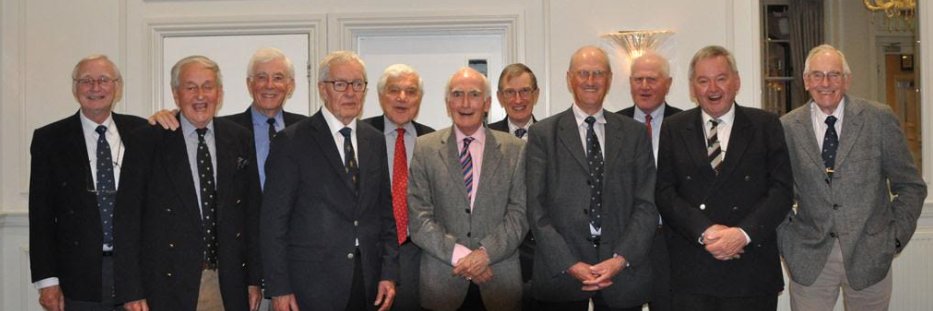
Looking incredibly young for a bunch of 79-80 year old pensioners - from left to right.....
Geoff Dryland, Nigel Griffiths, Tony Steel, Richard Slogrove, Henry Middleton, Black Robertson (89A), Andy Griffin, Ron Shimmons, Paddy Pyper, Simon Coy and Mike Laundy
2024 "A" Squadron Reunion
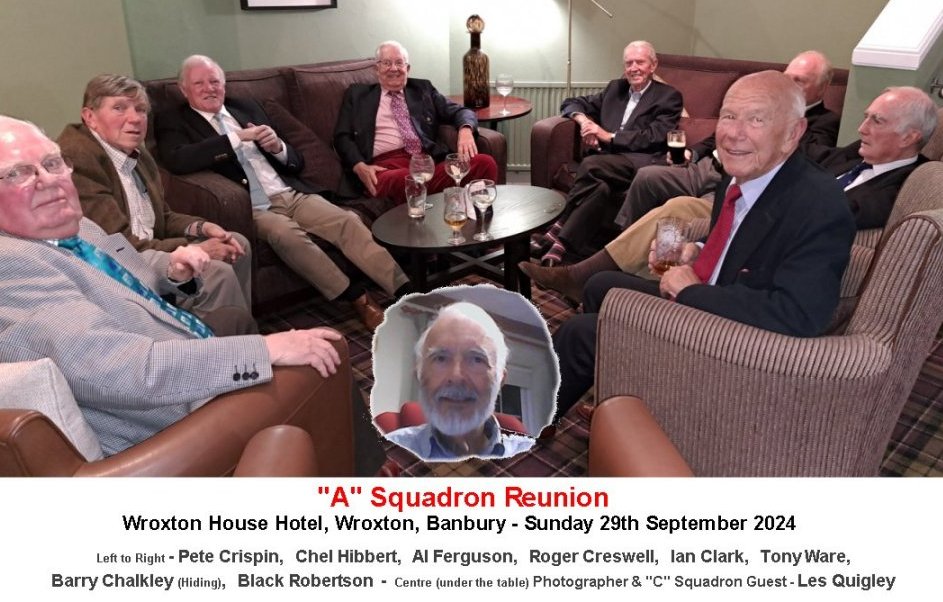
* Sadly we have to report that, since the 89A reunion, Tony Ware passed away in May 2025 *
Al Ferguson's campaign to get a medal for the "Cold War Warriors" fails!
Unfortunately the petition to get a medal for all military who served in the Cold War from 1952 to 1990 failed through lack of support. Despite the work put in by Group Captain Alan Ferguson (Rtd) of 89A, himself a former cold war Phantom Navigator, the petition did not reach the 10,000 signatures required for a parliamentary debate.
Al had noted that the British Military had quite rightly began creating and issuing medals to personnel who had served in conflict areas where British forces had participated. It is right that personnel are recognised for their participation in high risk zones, especially those front line personnel who served in the troubled times in Ireland, Cyprus, Malaya, Falklands, the Balkans, Iraq, Afghanistan, and other smaller trouble spots, however, Al recognised that those personnel who trained and practiced for war with the Soviets were not recognised. It was they and our many allies who deterred the more "gong ho" elements of the Eastern bloc from attacking the West. We do not know exactly how many young men and women were killed or maimed in accidents resulting from the tough training that they had to undergo to maintain the deterrence, but we do know that some 1,500 British aircrew died in flying accidents during the duration of "the cold war".
|
The medal of a top ranked aircrew RAF Officer - 1952 to 1990 |
The medals of a middle ranked ground based RAF Officer - 2000 to 2024 |
Following graduation, we in 89 lost 7 of our members in aircraft accidents. Sadly, like some of our comrades, many of those who served during this period are no longer with us, however their families and descendents are. So it is time the government stepped up and publicly recognised the debt that the country owes these "Cold War Warriors". Al lead the campaign to persuade them to do so. Amongst other actions he set up a petition to get a parliamentary debate on the proposal. This is what Al said on the petition ...
"Over the 44 years of the so-called "Cold War" hundreds of UK service personnel lost their lives in pursuit of an operational capability deemed necessary to deter Warsaw Pact aggression. We believe the service and sacrifice of those who died and survivors has not been adequately
recognised.
Before the Cold War becomes a totally forgotten part of the peace dividend, we believe it would be appropriate to provide recognition of the contribution made by the Cold War veterans of all three Services who served in that 44 year period of our post WW2 history, through a new medal.
Viewed against the many thousands of veterans who served in the 44 years of the Cold War, the potential cost of issuing medals to all Service personnel might be huge. If this this proposal to retrospectively award some form of medal is taken forward, qualifying personnel should be encouraged to apply for the award, but provision of the medal itself should be at cost - it should not be provided free of charge."
Sad to say that despite Al's stalwart efforts less than 10,000 signatures were garnered so a parliamentary debate was not possible!
Editors comment - A simple solution would have been to add the dates of the Cold War and a distinguishing "bar" to the recently issued 'Wider Service Medal', however, since the cold war was pre-2018, the start date set for the medal, "the powers that be" refused to re-classify it for earlier operations?.
89's Luxury Accommodation in 1963
|
A reminder of where and how the future cream of the RAF lived 60 years ago ... |
Compare this with accommodation that we provide for illegal immigrants? |
|
Our world war one huts (Up at 06:30 lights out at 22:30) |
A seaside hotel (Up when you want - what's lights out?) |
|
5 to a room, one pot belly coke fire in the centre of the room, no heating in the washing, WC and communal shower area! |
1 or 2 to a room - full central heating private bathroom facilities |
|
And we were happy |
And they protest? |
Did His Majesty the King know that his flying instructor was called "Snotty"
|
Our future King being taught to fly by one of 89's best Brian "Snotty" Synott |
"Brian you're not really called Snotty, are you?" "Only by good friends and never publicly, so no worries, Sir!!" |
Recently found
A couple of photographs from 89's Graduation ball in 1966
Apparently this is what smart young 21 year old Cranwell graduates and their ladies used to look like ....

Above (Left to right) - Tony Ware, Dave Harlow, Chel Hibbert and very pretty friends! Right - Startled friend of a champagne soaked Dave Harlow -(Apparently with roving hands) |
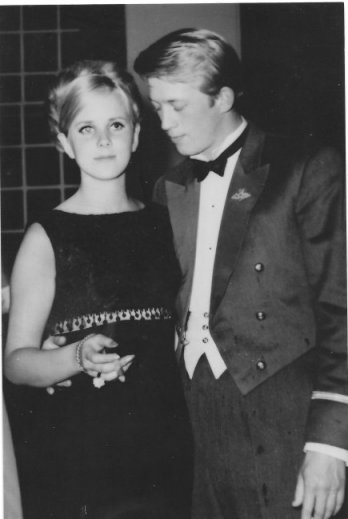 |
SAD NEWS - Another 89er bites the dust!
We regret to have to report that, after a long fight with strokes, another 89er - Dave Donnelly passed away on the 23rd February 2024 .
|
Dave was born on 6th February 1945. After the war, his father flew for BOAC and
was posted to Montreal so Dave spent his early years in Canada. Later, after the
family had returned to the UK, Dave joined the Air Training Corps where his love
for the RAF was kindled. Here he learned to fly, gaining his glider pilots
licence and a PPL.
Dave joined 89 Entry as a navigator.. Whilst at Cranwell he represented the College at basketball and athletics but his first love was gliding, where he became captain. After Cranwell his first operational posting was with Transport Command, navigating Argosy aircraft, based in Khormaksar, Aden, but flying around the Middle East supplying the RAF's many bases . |
 |
 |
From the Middle East he went to Brize Norton
navigating VC10s on their world wide missions.
This was followed. In September 1970 by an exchange tour with the Royal Canadian Air Force at Trenton, Ontario. Here, Dave continued flying around the world, but now in a Boeing 707. Whilst at Trenton he met and married Anna |
 |
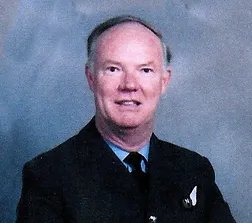 |
After returning to UK, he his
posting moved him and Anna around a bit including RAF Manby, RAF Valley, and
RAF Upavon, before he was posted to MOD in London. He then attended the Army Staff College at Camberley
before returning to RAF duties at RAF Rheindahlen in Germany. Here Dave headed
the UK delegation in Berlin. He returned to the UK in 1985 to command the Air Navigation School at RAF
Finningley. This was followed by another job at MOD before his final posting to
SHAPE headquarters in
Mons, Belgium.
Following retirement, David and Anna moved to Pateley Bridge in North Yorkshire in June 2000. He took up furniture restoration and went to College in Leeds to gain a City and Guilds in Furniture Restoration. For a few years he enjoyed walking along the river to Glasshouses Mill where he restored old furniture. Sadly Dave's health deteriorated following several strokes so using the superb craftsman's skills that he had learnt following RAF retirement became impossible. As a result he and Anna moved to the centre of Harrogate to be nearer medical facilities. |
| Dave's funeral took place in
Stonefall Cemetary, Harrogate on Monday 18th March 2024
89 were represented by Chris Saunby and Dave Harlow. Many other mates, who were spread throughout the world, watched the ceremony on a live streamed podcast. The location of the ceremony was very appropriate considering Dave's past connections with Canada as Stonefall Cemetery is the largest Commonwealth War Graves cemetery in Yorkshire. In addition to other military personnel, the cemetery houses almost 1,000 aircrew graves of which 666 of these are aircrew from the Royal Canadian Air Force. During WW2, North Yorkshire was the base for No.6 (RCAF) Group, Bomber Command. 6 Group had 11 operational airfields (of which only one - RAF Leeming is still operational) and 15 operational squadrons. The Group flew 40,822 operational†sorties with a total of 814 aircraft. Some 5,700 aircrew did not return from operations, of which 4,203†lost their lives. 666 Canadians are buried in Stonefall. There are about another 200 RAF/RCAF graves spread across North Yorkshire with the church next to former RAF Dishforth having 76. |
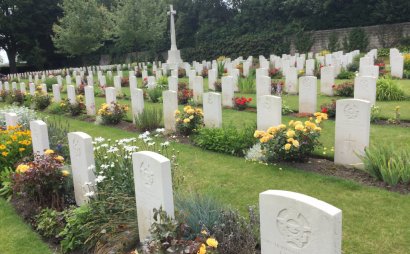 |


